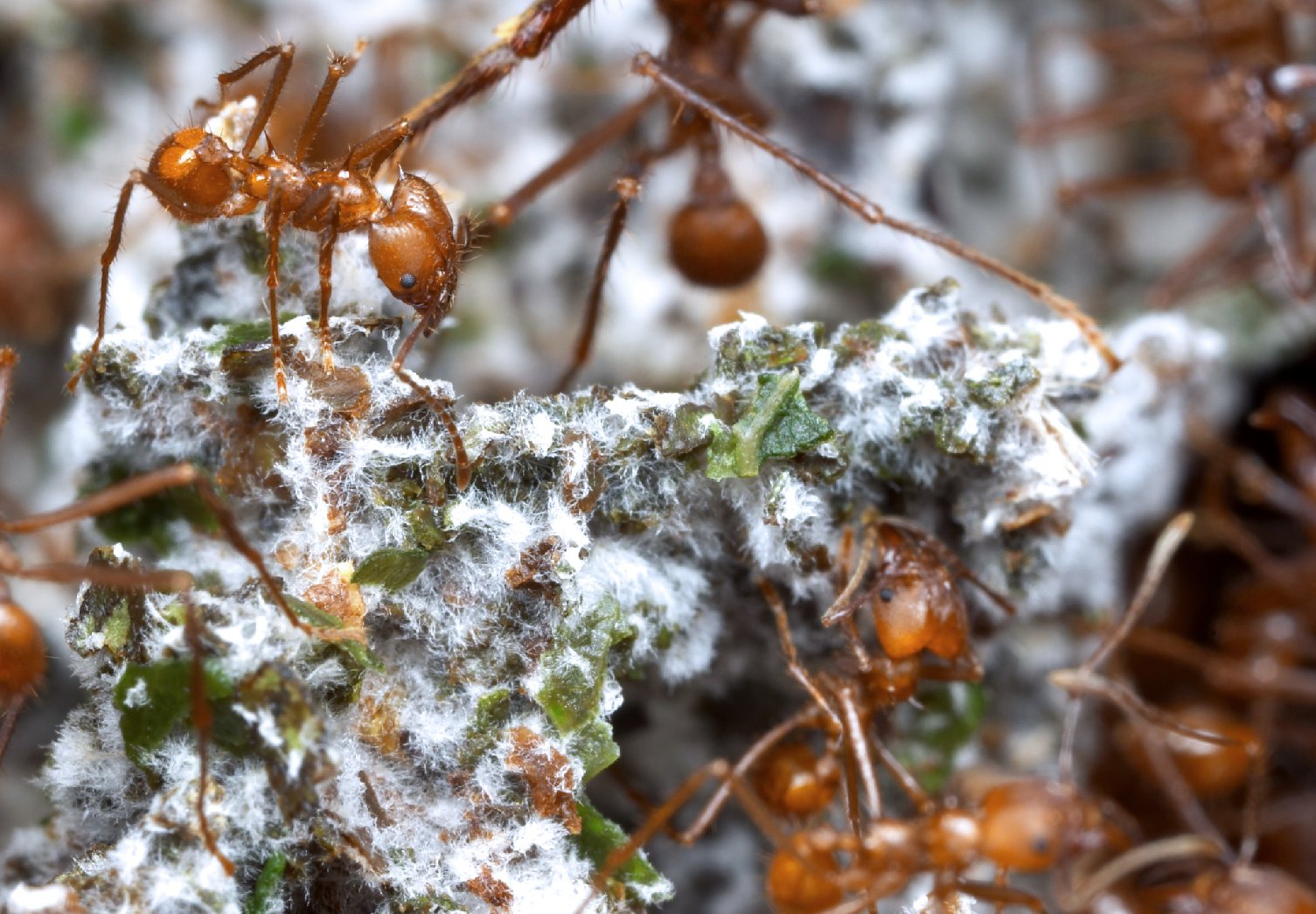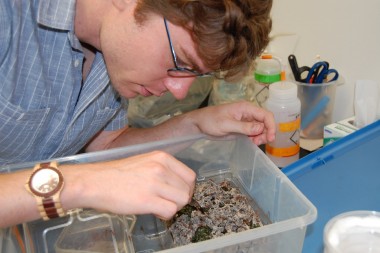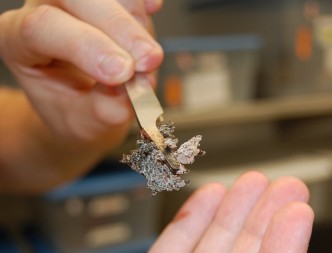
In the lobby of the Microbial Sciences building at the University of Wisconsin, leafcutter ants in a display colony hike back and forth. Improbably large leaf fragments wobble on their backs as the ants ferry them between a dwindling pile of oak leaves and a garden of fungus studded with leaves in assorted states of decay.
Made up of a single species of fungus and a handful of bacterial strains, the fungus garden breaks down the ants’ leafy harvest through an efficient natural process. It’s a process that researchers believe could be a model for producing biofuel in a more sustainable way.
As we transition away from petroleum dependence, ethanol-based biofuel has risen to the forefront as one of the most accessible sources of renewable energy. It’s produced by fermenting plant sugars, which are strung together into long chains called polysaccharides. Before the fermentation process can begin, these chains have to be snipped apart, a process that varies in difficulty depending on the type of plant being used.
Polysaccharide chains found in corn kernels -- the primary biofuel crop in the U.S. -- are relatively simple to break up. But corn depletes the soil and guzzles water and fertilizer, and using it for fuel siphons calories from the food supply to gas tanks.
On the other hand, perennial grasses and agricultural “waste” like cornstalks offer a biofuel source that has a lighter impact on the environment. But these woodier fibers -- referred to as “cellulosic” biomass -- are a tangle of robust polysaccharides that are trickier to deconstruct. Further complicating this problem, the molecular structure of plant biomass isn’t uniform. What breaks down the polysaccharides near the surface of a cornstalk or blade of grass might not work at all on those buried more deeply.

But finding efficient ways to extract energy from plants and other forms of biomass is not a new problem. In fact, it’s a problem that Earth’s plant eaters solved millions of years ago. And according to University of Wisconsin researcher Frank Aylward, if you’re looking for a model system, you can’t do better than leafcutter ants.
